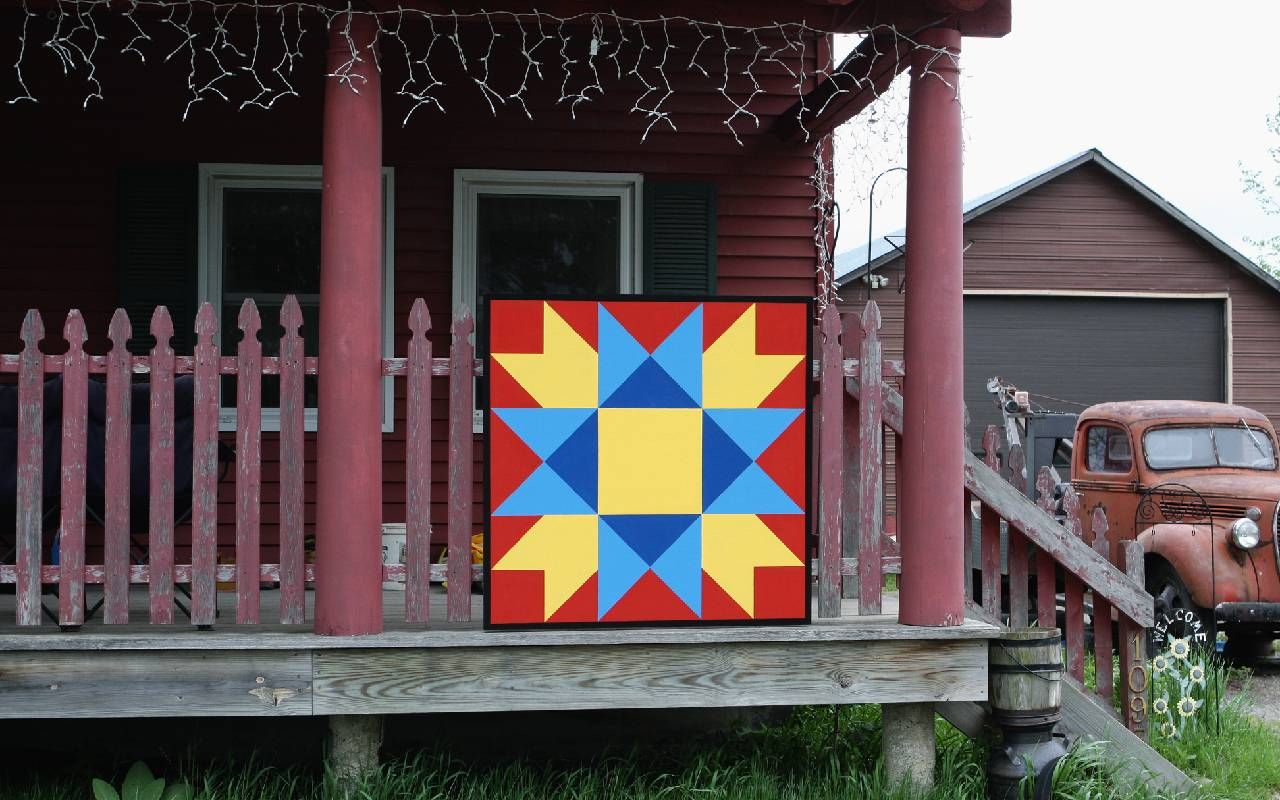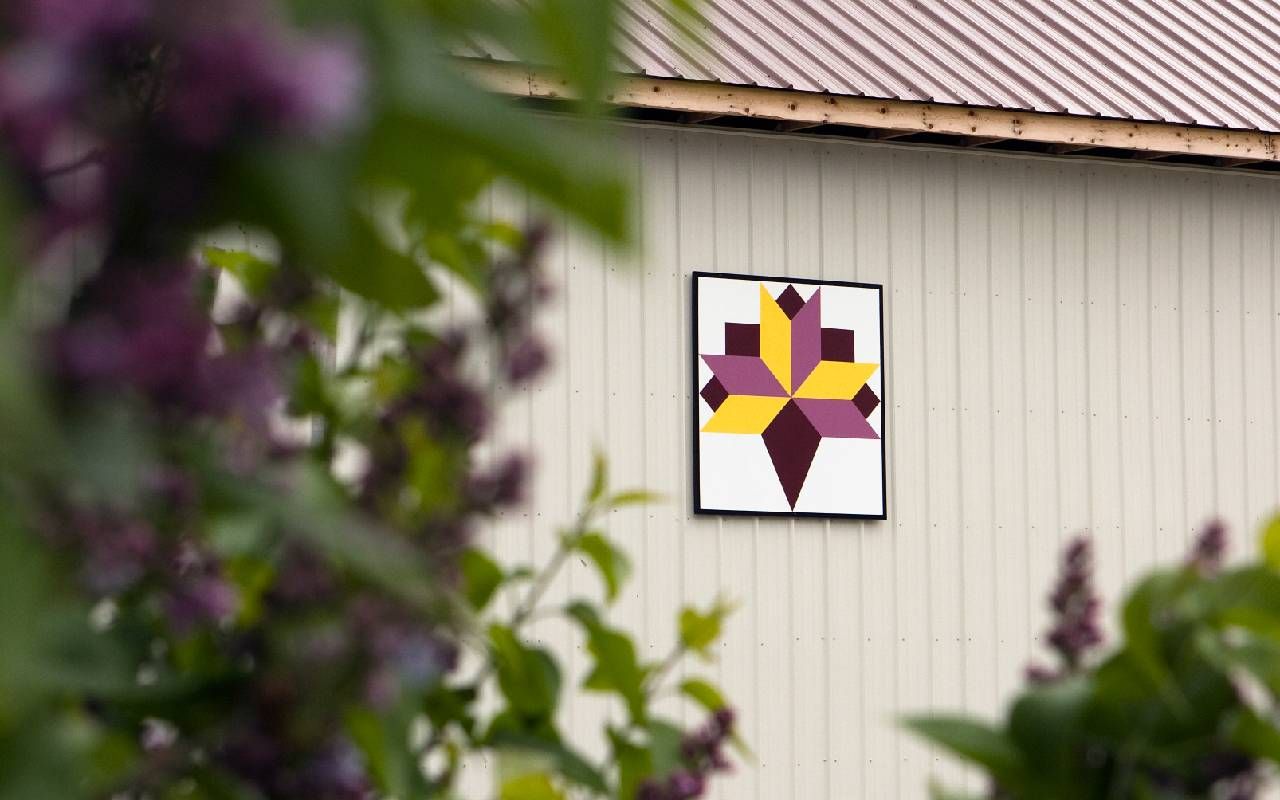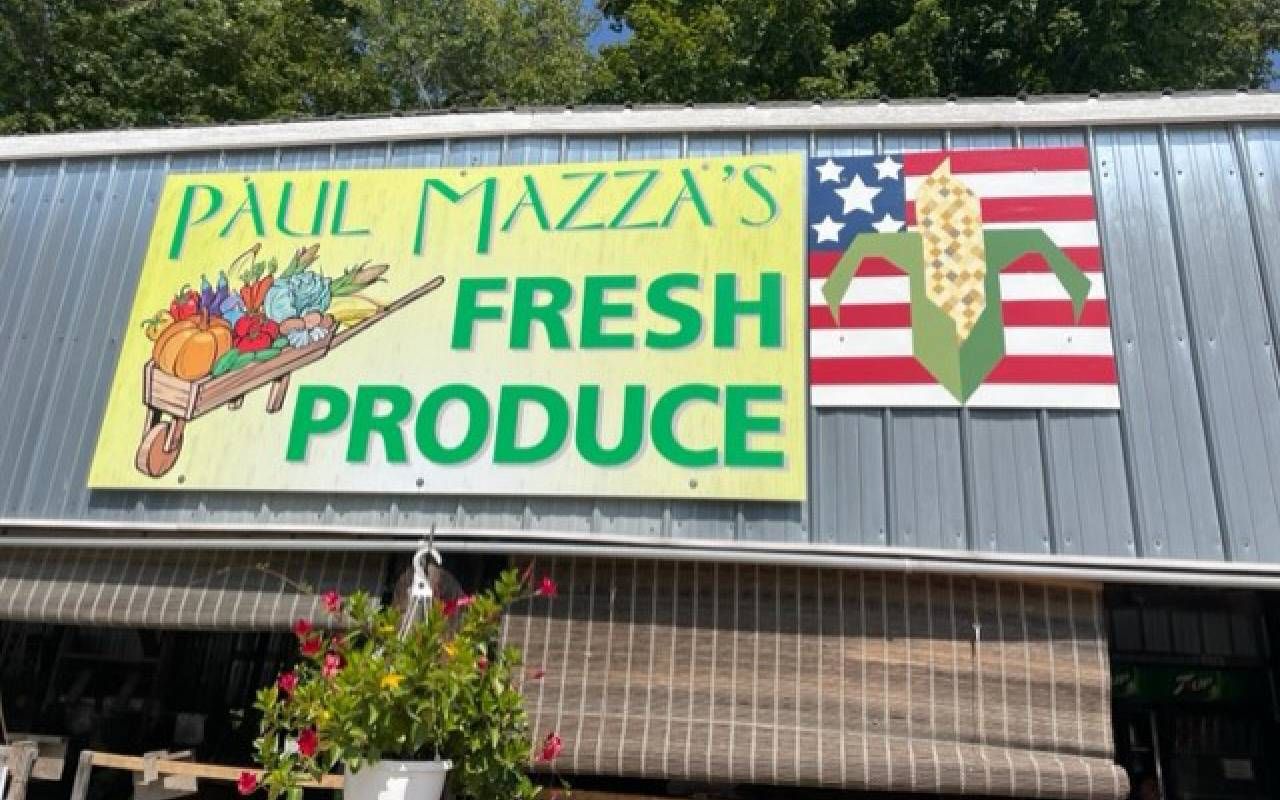Following a Trail of Painted Quilts
Driving across America, you'll find buildings adorned with giant, colorful quilt blocks

Cruising along a scenic rural road in the United States and Canada, you may increasingly find yourself passing buildings bearing colorful barn quilts — large wooden or aluminum painted quilt blocks (ranging from 4- to 8-feet square) mounted onto rustic structures like barns, chicken coops, sheds, fences and businesses.
Designs for these so-called barn quilts range from traditional geometric quilt blocks to flags, animals, flowers and family emblems. Almost anything goes — and the signs don't necessarily have to be mounted on a barn. They just have to be prominent enough to be seen from the road. Whatever their size, shape or design, however, these delightful pieces of art are sure to bring a smile to your face. And behind every block lies a story, like the one about an Ohio woman named Donna Sue Groves and her mother Maxine.
Where It All Started
The barn quilt movement started in 2001, when Donna Sue Groves painted a sign in honor of her mother, Maxine, who was a quilter. Soon, neighbors were also painting and mounting large quilt blocks, and the trend spread all over the country. Groupings of barn quilts began to crop up and barn quilt trails were born, making for fun, self-guided road trips.

Barn quilt trails allow small towns to show off their creativity and promote the art of quilting, memorialize local people and events and encourage tourism. According to Suzi Parron, co-author of "Barn Quilts and the American Quilt Trail Movement" and "Following the Barn Quilt Trail," quilt trail committees that paint and mount the barn quilts are usually behind the installations, but 4H clubs, scout troops and schools may also join in the effort.
How to Pinpoint Trails to Visit
To map out a barn quilt road trip, go to Parron's website Barn Quilt Info and click on states you plan to visit. Once you click on a state, you'll be directed to a screen that features counties with active barn quilt trails highlighted in yellow. Click again, and you'll be directed to the website for a specific trail and to maps you can follow to view the barn quilts in that region. Once on the road, you can scavenger hunt for the barn quilts using the maps as guides.
You'll find one of, if not the largest, barn quilt trail in Franklin County, Vermont. "The Barn Quilts of Northern Vermont Trail started in 2009 with 12 barn quilts, and grew from there, with barn quilts popping up all over the county without effort or advertising." says Sharon Perry, one of the organizers, who adds that "there are now 538 documented barn quilts at 453 locations." The 12 original barn quilts, which feature popular geometric quilting designs including the Mariner's Compass, Blazing Star, Maple Leaf, Starburst and Basket of Flowers, are located on Route 105 in Sheldon, Vermont, according to Fern Mercure, who started the trail with Perry after spotting barn quilts in Indiana on a cross-country trip with her husband. "There are about 40 barn quilts on Route 105 alone," she says.
"There are about 40 barn quilts on Route 105 alone."
Another large trail can be found in Shawano, Wisconsin, says Parron, which bills itself as "Wisconsin's Barn Quilt Capital." Initiated by local writer/photographer Jim Leuenberger in 2010, it now has over 400 colorful and creative barn quilts. Parron also calls out the smaller Ponchatoula Quilt Trail in Louisiana as a fun trail to visit because it features contemporary designs, many created by artist Kim Zabbia to promote local businesses.
But barn quilt trails are not confined to the Northeast, Midwest and the South. "I've seen beautiful trails in California and Alaska," says Parron, and "you might be surprised to find a barn quilt trail near where you live." So true — I recently noticed one a couple of miles from my home in Connecticut.
When Should I Go?
Just as the best time for road trips is spring through fall, so, too are the best times of year to see trails. May through November, for instance, is ideal for venturing up to northern Vermont, according to Mercure. And while you're viewing these public works of art, you can enjoy the legendary New England green mountains vistas and, if the timing is right, fall foliage; make a stop to go apple picking and eat at The Abbey Pub and Restaurant in the town of Sheldon.
Can I Make My Own Barn Quilt?
Naturally, many of the people who make barn quilts are avid quilters. But you don't have to be a quilter or a painter to make a barn quilt, says Kimberly Hess, of Essex, Vermont, a self-taught artist and quilter who now teaches people how to make the signs. Hess's classes are in high demand and she holds at least one class almost every month, according to Perry and Mercure.

There are many techniques and materials, but Hess recommends purchasing a 4 x 4-foot piece of aluminum composite (the material used to make signs), because it is lightweight and simple to hang compared with the marine-grade plywood that has traditionally been used. Once you've chosen a design, you need to do some math and wield a ruler to precisely map out the image on your sign, and then apply Frogtape to separate the sections to be painted different colors and to create straight lines.
Barn quilts are really fun to make.
Hess uses indoor satin latex paint and applies the lightest color first in thin coats with long strokes to create a smooth image. "I tell people to imagine they're painting a fence," she says, "and to apply two or three coats." The tape can be peeled away from the sign while the paint is still wet, although it's important to go slowly so as not to disturb the clean lines you've created. Once the painting is fully dry, she recommends applying a sealant like Rustolem Spar varnish to protect the image from the elements.
Barn quilts are really fun to make, the women I interviewed told me, especially as a group activity — and you don't need to be an experienced artist to make a barn quilt that people can admire from afar. You just need patience to measure, tape and paint slowly.
"Even if you're not a great painter, you can still make a barn quilt that you are happy with," says Hess, not to mention one that will honor the art of quilting and your community.

